This post may contain affiliate links. Please read our disclosure policy.
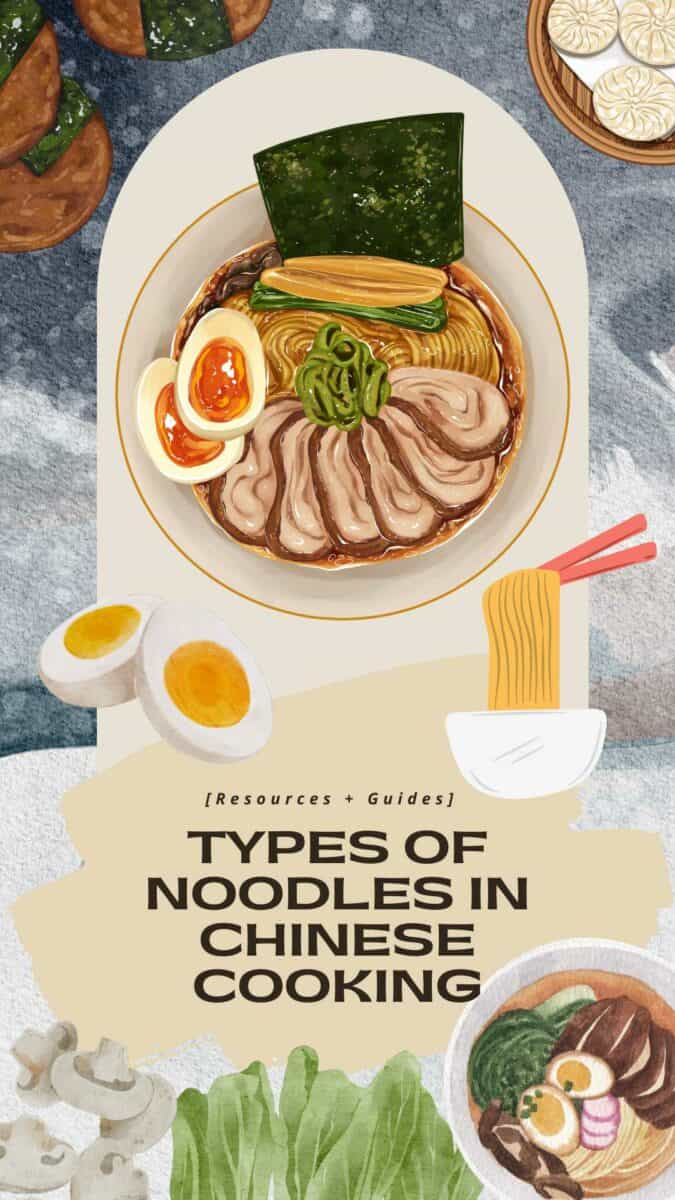
If you’ve been a longtime follower or Instagram follower, you’ll see that I cook often with various noodles. In majority of my ramen recipes, I always say to get ‘fresh ramen,’ and in many of my dishes, I specify rice noodles.
Now, I can see how this can be confusing because not everyone has grown up shopping in Asian supermarkets and not everyone has access to the luxuries I have access to.
In this post, I’m going to be talking about all the noodles I’ve cooked with and used in various of my Asian recipes and what they look like, where to find them, how to substitute, and hopefully dispel all the confusion!
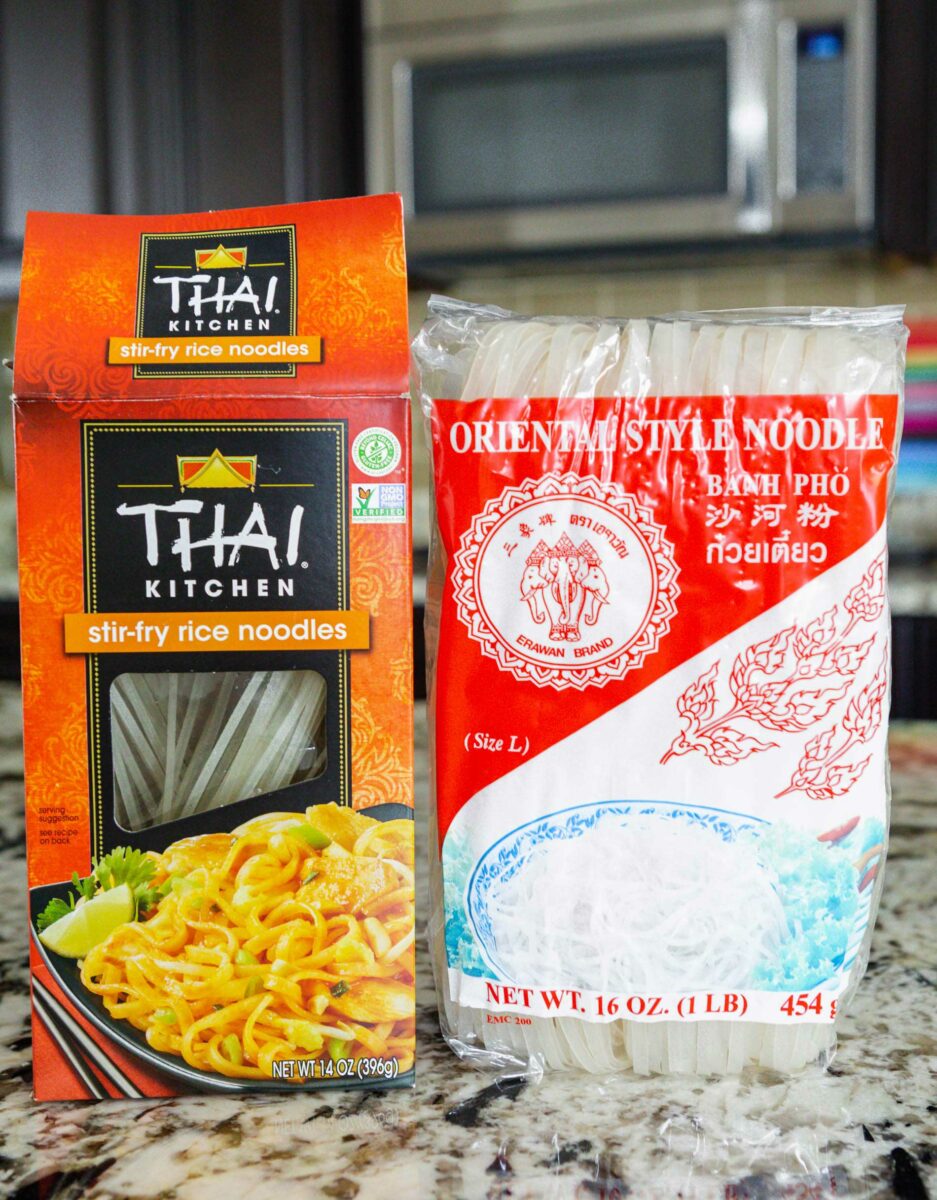
Rice noodles
This is probably the most general term for majority of the noodles I cook with, and it’s pretty confusing. However, my biggest tip is that you can generally figure out ‘rice noodles’ by just looking at their shape and color. They are also dried, like when you buy a box of pasta.
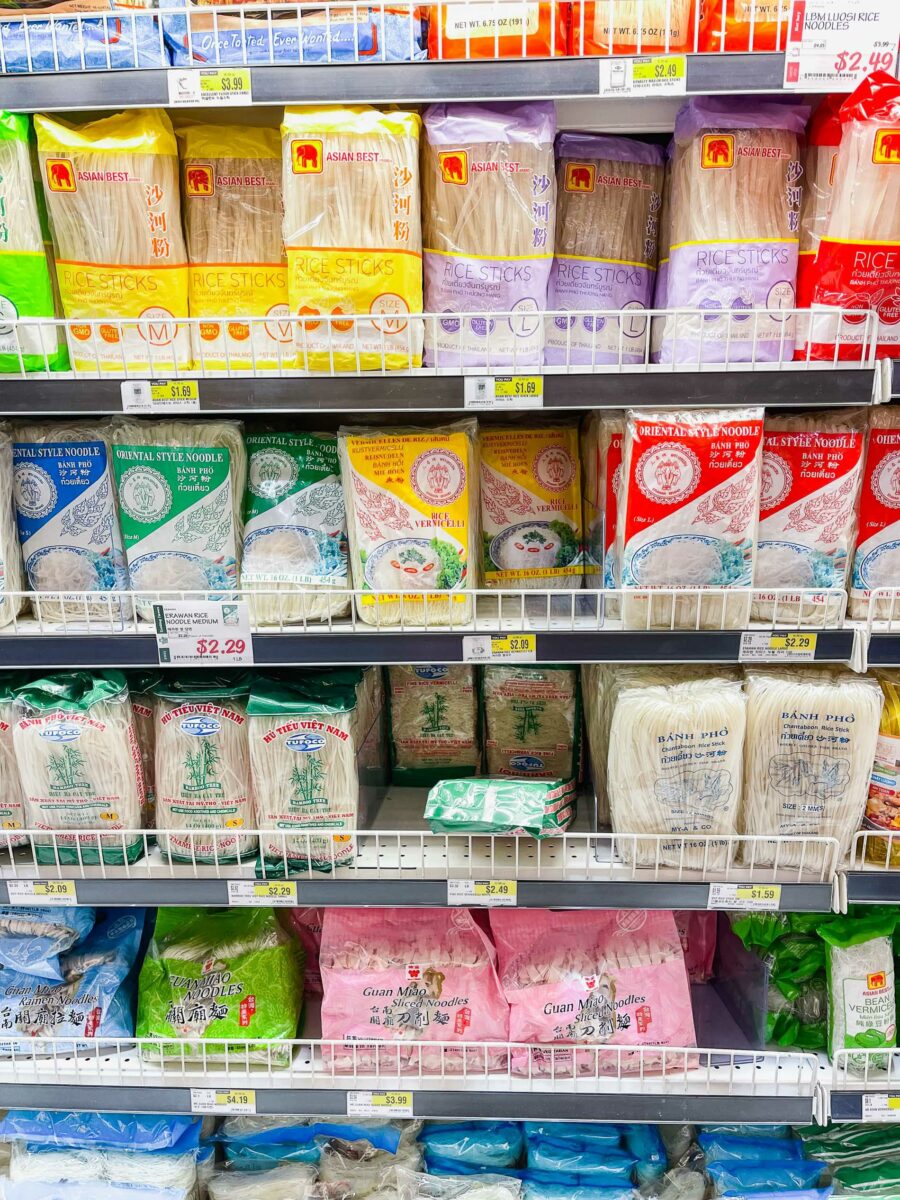
In general, I use rice noodles that are clear and I use the largest thickness they offer (that’s what the sizes mean on the bags). Different brands offer various “sizes” and they aren’t all the same. Some brands offer L (large) and then you’ll look at another package and it’s the same size but it’s labeled as M (medium).
Don’t let that deter you though — just look at the packaging and determine whether you want a thicker noodle or a thinner one and buy to your preference. I just like the L size because I like my noodles to be meatier to bulk up the dish and mouthfeel it just tastes better. I also like it because I think I’m just partial to Pho-style and Pad Thai-style noodles.
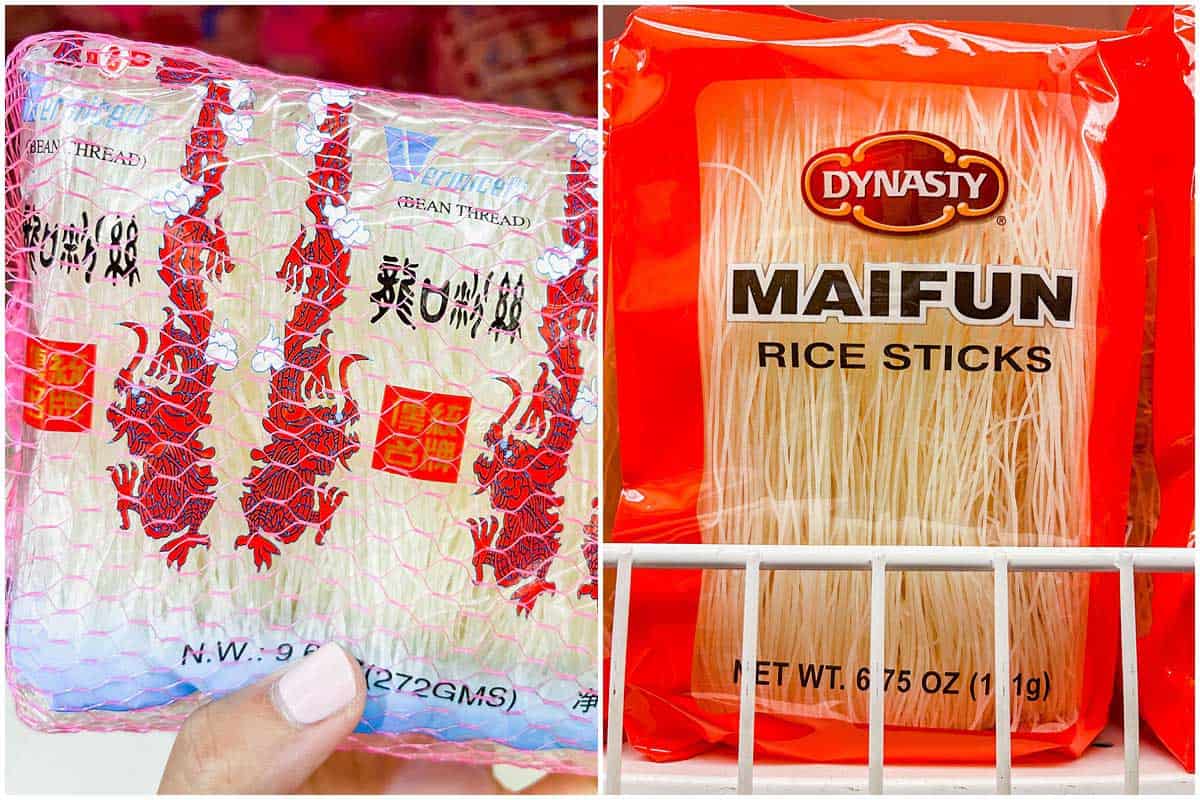
Mifun
Growing up, my mom would make mifun (literally means rice noodle in Chinese — confusing, yeah?) all the time and she’s actually known for her mifun. All her friends will ask her to bring it to potlucks.
Personally, I dislike mifun. I don’t know if it’s because we ate it all the time as a kid or because the noodles are so thin they remind me of messy, tangled up hair, haha
There’s two types (at least from what my mom would buy). There’s the soybean vermicelli thread and then there’s the rice stick version. The main difference is the ingredient — soybean vs. rice. It’s really up to you what you want to use, but they’re just really thin noodles that take no time to cook in boiling water.
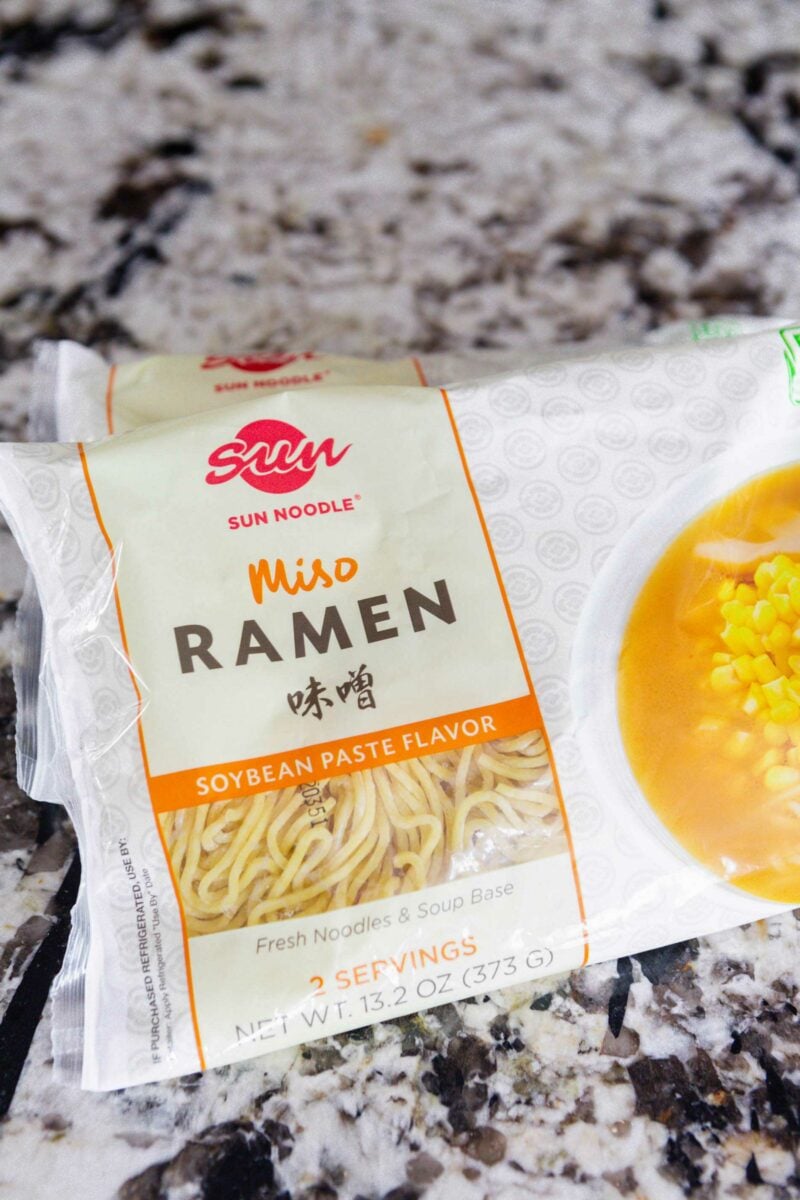
Ramen noodles
While ramen noodles are definitely reminiscent of college days, those aren’t typically the ramen noodles I use.
Yes, you totally can in a pinch use bagged ramen noodles and toss out the seasoning packet (I usually do because those are loaded with sodium, albeit delicious) and toss the noodles in a sauce you made.
Or, you can buy fresh ramen noodles and the difference is unreal. It’s like fresh Italian pasta vs. boxed pasta.
The brand I buy is Sun Noodle and they’re legit the best brand for fresh ramen noodles. I know it can be hard to find so that’s why I always offer the bagged ramen noodle option. Typically when I buy Sun Noodle, they have “flavors” on them: shoyu (soy sauce), miso, or unflavored. If they have unflavored, I will buy that, but if they don’t, I buy the other flavors too and just toss out the seasoning pack. That’s all the difference is…the “flavors” mean the seasoning packet that comes with it.
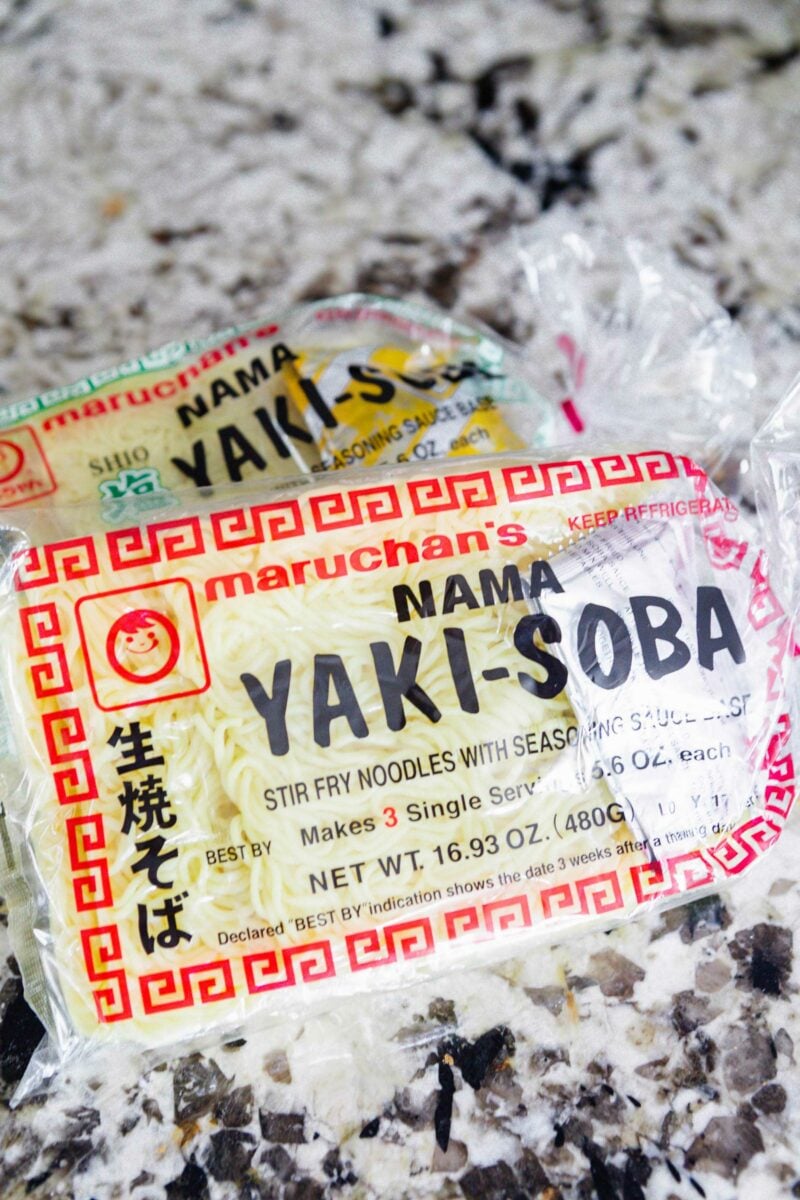
Yakisoba
My favorite noodles growing up. This is where the seasoning packet of these is key and irreplaceable (unless I figure out how to make it myself).
These are seriously SO easy and so flavorful. My mom bulks it up with onion, celery, carrots, shiitake mushrooms, and whatever protein. Most of the time we just eat it without a protein and it’s still so damn good. It takes probably 15 minutes total to make and there is never any leftovers.
You cook all your veggies first then add in the already cooked noodles. Let it warm up and heat through; it’ll then all break apart easily. Add the seasoning packets, stir/mix, and enjoy. Omg, so easy and good.
The brand I usually get is the one above. It’s the one my mom always got. We would get the red bordered packets but sometimes the store doesn’t have it so the green will suffice but my most favorite is definitely the red one so find that! It’s not spicy so if you want spice, we add sriracha on top before serving.
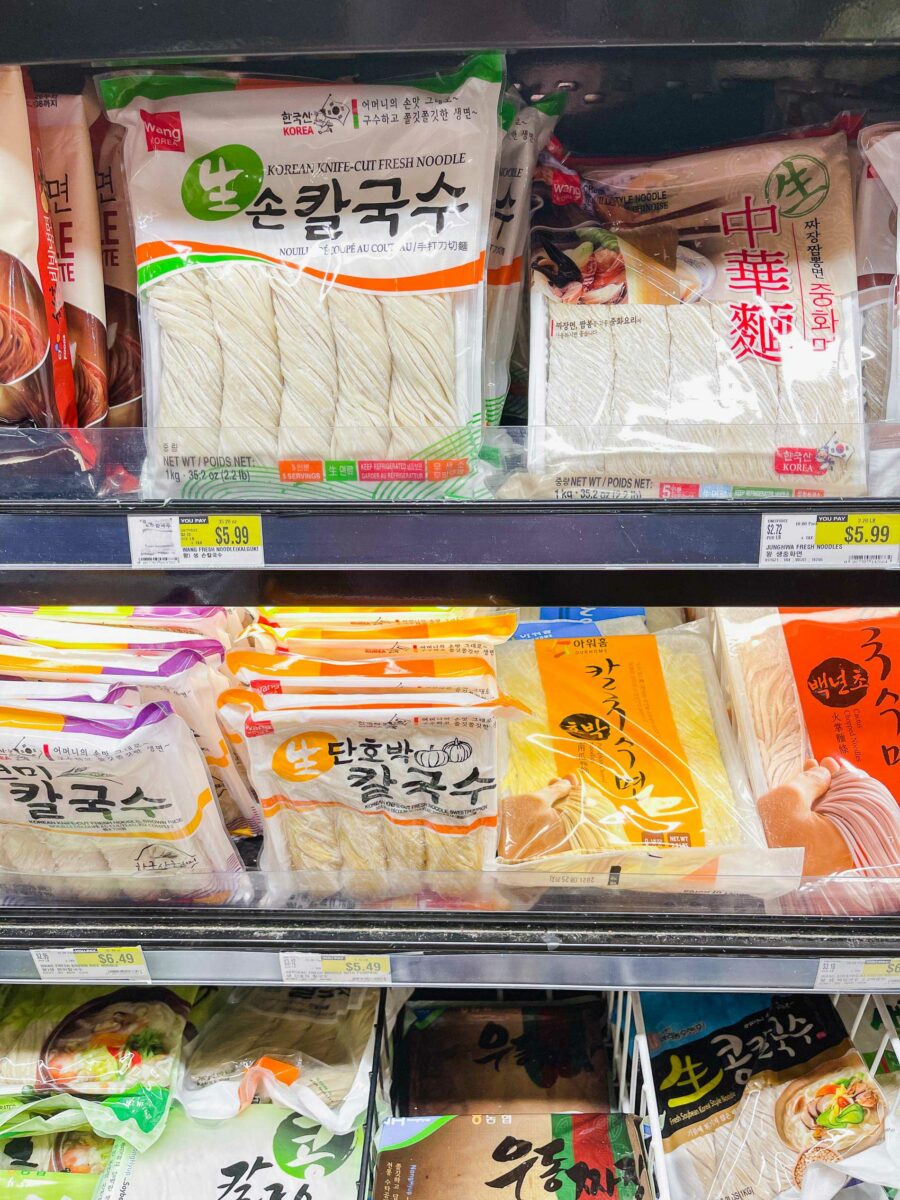
Fresh noodles
You can find a plethora of fresh noodles at all Asian supermarkets and they’re the best! They really do taste fresh. I like their chewy consistency and how soft they are! You can use them in stir frys and noodle soups.

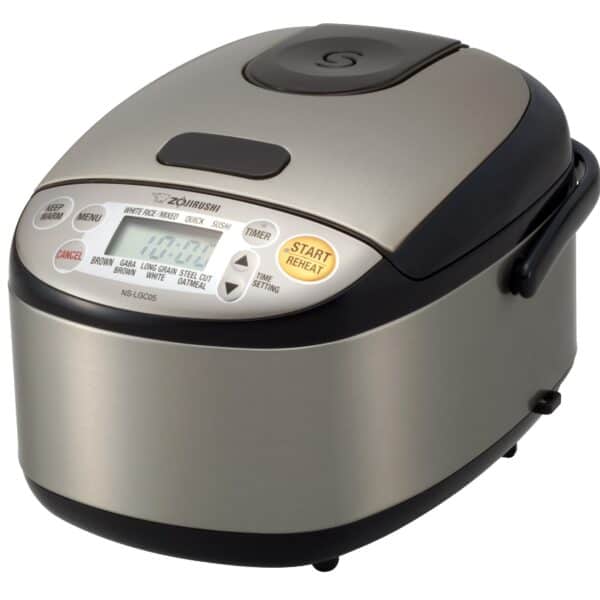
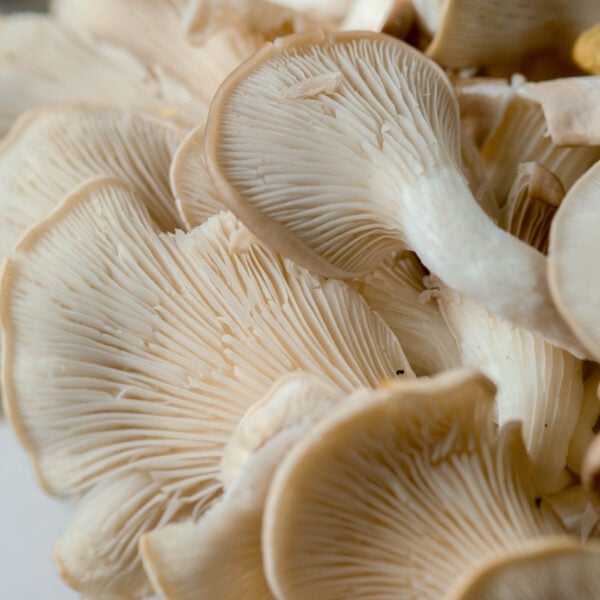
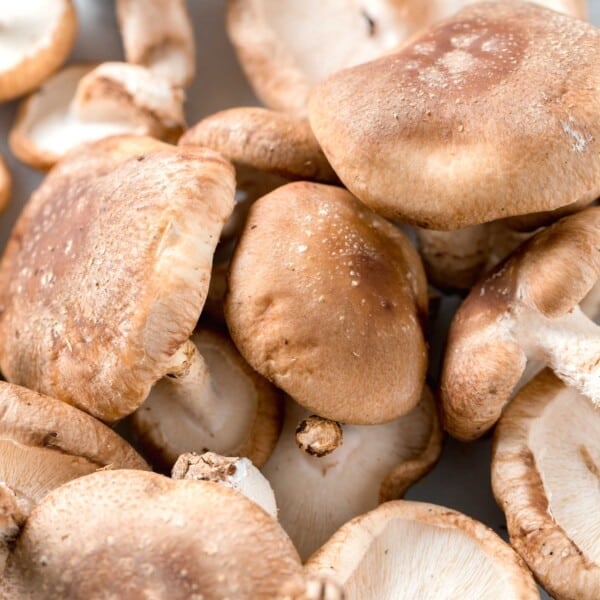
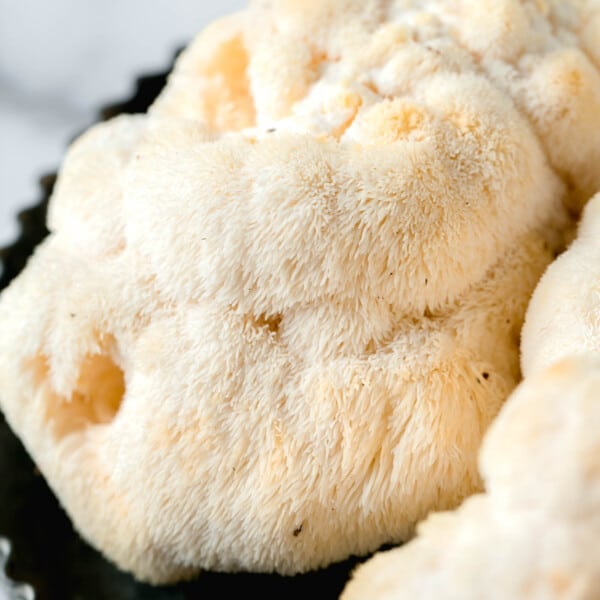







If I purchase any of the fresh noodles do they freeze well (uncooked)?
yes! they freeze well :)